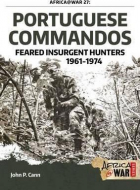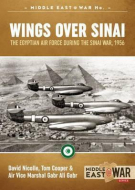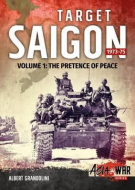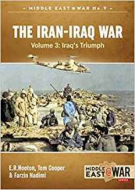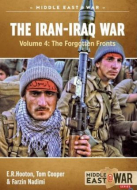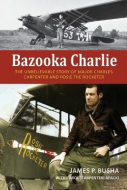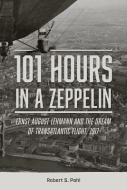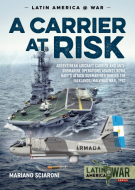
- Agriculture
- Architecture & Design
- Arts & Photography
- Biography
- Business
- Calendars and Diaries
- Childrens (All)
- Childrens (Illustrated)
- Childrens (Picture flats)
- Childrens (Te Reo)
- Classics
- Cooking, Food & Drink
- Craft & Hobbies
- Design (Art / Graphics)
- Design (Interiors)
- Education
- Fashion
- Fiction & Literature
- Fiction - Young Adult
- Gift Ideas
- Health & Wellbeing
- History
- Home & Garden
- Humour & Gift
- Instead of a Card Poems
- Military
- Music
- New Zealand
- NZ (History)
- NZ (Landscapes)
- NZ (Pictorial)
- Poetry
- Reference
- Religion & Faith
- Science & Nature
- Sport & Recreation
- Stationery
- Taschen : 40th Anniversary Edition
- Taschen : BA Basic Art
- Taschen : BU Bibliotheca Universalis
- Te Reo Māori
- Transport
- Travel
Military (455)
|
Portuguese Commandos (Africa@War 27)
ISBN: 9781911096320 Author: John P. Cann Publisher: Helion & Company During the 13-year insurgency (1961-74) in Portuguese Africa, more than 800,000 men and women served in the Portuguese armed forces. Of this number, about 9,000... During the 13-year insurgency (1961-74) in Portuguese Africa, more than 800,000 men and women served in the Portuguese armed forces. Of this number, about 9,000 served as commandos (or about 1 percent). Yet their combat losses ― 357 dead, 28 missing in action and 771 wounded ― represented 11.5 percent of the total casualties (a percentage 10 times that of normal troops). It is well established that these warriors were responsible for the elimination of more insurgents and capturing more of their weapons than any other force during the war. Great pains were taken to stay abreast of the latest enemy operational methods and maintain the 'warrior edge' in the force. This edge, in essence, was an approach to fighting that pushed the commandos always to think of themselves as the hunter rather than the hunted. Officers returning from contact with the enemy were rigorously debriefed, and commando instructors regularly participated in operations to learn of the latest enemy developments. This information was integrated with intelligence from other sources gathered by the military and national intelligence services, and from this current knowledge, training was constantly revised to remain attuned to the enemy and his behavior. The commandos became a breed apart - and their reputation was such that when insurgents discovered a unit deployed into their area, they would generally withdraw until the killers left. This commando training - and its sympathy with the fighting environment - made the commandos the most effective ground force in the Portuguese Army. The commandos were expert practitioners in the art of counterinsurgency, and their practice of destroying the enemy in great numbers quickly and quietly served as inspiration not only to South Africa and Rhodesia, but to the enemy himself. This is the story of the Portuguese commandos: their beginnings, their unique operations and their legacy and influence in subsequent sister units such as the Buffalo Battalion of South Africa. Bind: paperback Pages: 64 Dimensions: 210 x 300 mm Publication Date: 22-02-2017 |
$49.99 |
|
|
Wings over Sinai Middle East@War 8
ISBN: 9781911096610 Authors: David Nicolle, Tom Cooper, Air Vice Marshal Gabr Ali Gabr Publisher: Helion & Company Sixty years since the tripartite aggression of France, Great Britain and Israel against Egypt, this is the first account about Egyptian military operations duri... Sixty years since the tripartite aggression of France, Great Britain and Israel against Egypt, this is the first account about Egyptian military operations during the Suez War of 1956 (or 'Suez Crisis', as it is known in the West). Based on research with the help of official Egyptian documentation and recollections of crucial participants, this book provides an unique and exclusive insight into the 'other side' of a war that many consider has marked 'the end of the British Empire'. From the Western point of view, the situation is usually explained in quite simple terms: in retaliation for President Gamal Abdel Nasser's nationalization of the Universal Suez Canal Company - and thus the strategically important waterway of the Suez Canal - France and Great Britain (operating in concert with Israel) launched the operation codenamed 'Musketeer'. Divided into three phases, each shaded into the other; this aimed at obliterating the Egyptian Air Force, occupying the whole of the Suez Canal and toppling Nasser's government. From the Egyptian point of view, backgrounds were much more complex than this. Striving to modernize the country, a new and inexperienced government in Cairo launched a number of major projects, including one for the construction of a gigantic Asswan Dam on the Nile. The only Western power ready to help finance this project, the USA conditioned its support with basing rights for its military. With the last British soldiers still about to leave the country - and thus end Egypt's occupation by foreign powers for the first time in 2,000 years - Nasser found this unacceptable. Around the same time, Egypt found itself under pressure from Israeli raids against border posts on the Sinai. Left without a solution, Cairo decided to nationalize the Suez Canal in order to finance the Aswan Dam project, but also to start purchasing arms from the Soviet Union. In an attempt to bolster Egyptian defenses without antagonizing Western powers, Nasser concluded the so-called 'Czech Arms deal' with Moscow - resulting in the acquisition of Soviet arms via Czechoslovakia. Little known in Cairo at the time, such moves tripped several 'red lines' in Israel and in the West - in turn prompting aggression that culminated in a war. Wings over Sinai is, first and foremost, an account of the battle for survival of the Egyptian Air Force (EAF). Caught in the middle of conversion to Soviet-types, this proved more than a match for Israel, but were hopelessly ill-prepared to face the military might of Great Britain and France too. Sustained, days-long air strikes on Egyptian air bases caused heavy damage, but were nowhere near as crippling as the losses usually claimed and assessed by the British, French and Israelis. The EAF not only survived that conflict in quite a good order, but also quickly recovered. This story is told against the backdrop of the fighting on the ground and the air and naval invasion by British and French forces. Richly illustrated with plenty of new and previously unpublished photographs, maps (and 15 color profiles), this action-packed volume is illustrates all aspects of camouflage, markings and various equipment of British and Soviet origin in Egyptian military service as of 1956. Bind: paperback Pages: 112 Dimensions: 210 x 300 mm Publication Date: 04-05-2017 |
$49.99 |
|
|
Two Sides of the Same Bad Penny
ISBN: 9781911096689 Author: Michael Locicero Publisher: Helion & Company In 1915, Great Britain and her Empire found itself engaged at Gallipoli and on the Western Front. Lacking the wherewithal to conduct both campaigns effectively,... In 1915, Great Britain and her Empire found itself engaged at Gallipoli and on the Western Front. Lacking the wherewithal to conduct both campaigns effectively, the year was one of theatre-wide learning and experiential exchange that continued to the armistice. Primarily based on a series of papers delivered at the Western Front Association's Gallipoli and the Western Front Centenary Conference (25-27 September 2015), this compendium volume contains original essays by such notable First World War historians as Stephen Chambers, Mark Connolly, Christopher Pugsley and Gary Sheffield. The various topics include command and control, military technology, logistics and British and Dominion forces. Bind: hardback Pages: 266 Dimensions: 156 x 234 mm Publication Date: 19-06-2018 |
$79.99 |
|
|
Target Saigon 1973-75 Volume 1 (Asia@War 5)
ISBN: 9781911512349 Author: Albert Grandolini Publisher: Helion & Company After 27 years of conflict it seemed that peace would finally settle on the Indochina peninsula on 27January 1973 with the signing of a peace accord in Paris. T... After 27 years of conflict it seemed that peace would finally settle on the Indochina peninsula on 27January 1973 with the signing of a peace accord in Paris. The North Vietnamese had previously launched their greatest offensive against South Vietnam but fell short of their objectives, the destruction of the Army of the Republic of Vietnam (ARVN) and the destruction of the Saigon regime. They now proposed, in exchange for the release of the US prisoners of war, the withdrawal of the remaining American forces in Vietnam. Far from feeling committed by the agreement, the Hanoi leadership prepared the next round, the ultimate conquest of South Vietnam now that Washington had completely evacuated its last troops from the country. That first volume sets the scene, by making an assessment of the situation on the field, in both tactical and strategic perspectives. It also examines the last episode of the US gradual withdrawal as well as the implementation of part of the Peace Accords with the removal by the US Navy of the mines sown by its aircraft from the North Vietnamese ports and inland waters. It then presents the respective opposing armed forces and will particularly focus on the North Vietnamese rebuilding after the havoc wrought by the American aerial campaign of 1972. Furthermore, the expansion of the famous Ho Chi Minh Trail, vital for the logistical support of the communist troops, is thoroughly detailed. The South Vietnamese on their part placed great emphasis on developing their own air force in order to try to replace the withdrawal of American airpower. Most at all, it also details the initial fighting that not only resumed but soon escalated into divisional-level battles where the South Vietnamese still prevailed. Bind: paperback Pages: 88 Dimensions: 210 x 300 mm Publication Date: 21-11-2017 |
$49.99 |
|
|
The Iran-Iraq War Volume 3 (Middle East@War 9)
ISBN: 9781911512448 Authors: Tom Cooper, E R Hooton, Farzin Nadimi Publisher: Helion & Company The Iran-Iraq War was one of the bloodiest conflicts of the 20th Century and accidentally created the current nightmare of Islamic fundamentalist terrorism. The... The Iran-Iraq War was one of the bloodiest conflicts of the 20th Century and accidentally created the current nightmare of Islamic fundamentalist terrorism. There have been many books on the conflict but this is the first detailed military history using materials from both sides, as well as materials obtained from US Intelligence circles and British Governmental archives. It provides a unique insight into a war which began through miscalculation and rapidly escalated into the longest conventional conflict in the post-Second World War era. The third volume covers the last two years of the war on the Southern front, where Iranians made their last supreme effort to break through Iraqi lines during the winter of 1986-1987. Iraqi defences just about held. For a year, there was an ominous silence, but then Iraq launched a series of devastating blows that recovered the Faw Peninsula, pulverised weakly-occupied Iranian positions, and drove the frontlines back to the international border. Iran was left with no option but to sue for peace. Bind: paperback Pages: 80 Dimensions: 210 x 300 mm Publication Date: 05-04-2018 |
$55.00 |
|
|
The Iran-Iraq War Volume 4 (Middle East@War 10)
ISBN: 9781911512455 Authors: Tom Cooper, E R Hooton, Farzin Nadimi Publisher: Helion & Company The Iran-Iraq War was one of the bloodiest conflicts of the 20th Century and accidentally created the current nightmare of Islamic fundamentalist terrorism. The... The Iran-Iraq War was one of the bloodiest conflicts of the 20th Century and accidentally created the current nightmare of Islamic fundamentalist terrorism. There have been many books on the conflict but this is the first detailed military history using materials from both sides, as well as materials obtained from US Intelligence circles and British Governmental archives. It provides a unique insight into a war which began through miscalculation and rapidly escalated into the longest conventional conflict in the post-Second World War era. Part 4 in this mini-series covers the warfare between Iran and Iraq on the Central and Northern Fronts. Difficult terrain made it problematic for either side to assemble overwhelming superiority. Following initial Iraqi attacks that seized some territory, the Iranians began gradually nibbling back until achieving some success in the center, in 1982. Subsequently, the Central Front saw only minor conventional battles until Iraq launched several major blows in 1988. In the north, fighting primarily revolved around several Kurdish insurgencies in northern Iraq, and culminated in the horror of the Halabcheh gas attack. The final campaign of the war saw Iraq-supported Iranian émigrés launching a spectacular, but also a swiftly-crushed, invasion of their homeland. Bind: paperback Pages: 80 Dimensions: 210 x 300 mm Publication Date: 19-04-2018 |
$55.00 |
|
|
The Paras (Africa@War 28)
ISBN: 9781911512486 Author: John P. Cann Publisher: Helion & Company Portuguese paratroopers or "paras" began as a stepchild of the army and found a home in the Portuguese Air Force in 1955. Initially, the post-World War Two Port... Portuguese paratroopers or "paras" began as a stepchild of the army and found a home in the Portuguese Air Force in 1955. Initially, the post-World War Two Portuguese Army seemed to have had mixed emotions about the need for elite, special-purpose forces that operated in small units with the attendant flexibility and elevated lethality. Shock troops have been traditionally controversial, and even the vaunted military theorist Baron Karl von Clausewitz saw little point in them. The history of the paras in the Portuguese Army is illustrative of this ambivalent view. Nevertheless, in a "war of the weak" in which insurgents avoid government strengths and exploit its vulnerabilities using agility, deception, and imagination, such small, crack government units are particularly well suited to counterinsurgency operations. This appreciation emerged with the threat of a new kind of war in Portuguese Africa, an insurgency, and the new and visionary Air Force well understood the potential of paras when combined with the mobility of the helicopter. The Air Force saw an urgent need for troops who could fight an unconventional war, who could not only defeat an enemy but separate him from the population in which he sought concealment and support and on which he depended for funding, recruits, and intelligence. These were specialised warfighters who in one minute were physically destroying an insidious enemy and in the next administering aid and support and protecting a vulnerable population. These were just the troops that Portugal would require for military success in its approaching battle fought between 1961 and 1974 to retain its African possessions, and this vision would be realized on the African battlefield with devastating consequences. This book tells the paras' story as researched from Portuguese sources. It details how they were formed and trained and how they developed their imaginative, effective, and feared tactics and applied them in operations to protect the population from insurgent predations and destroy a vicious enemy. Bind: paperback Pages: 72 Dimensions: 210 x 300 mm Publication Date: 22-02-2017 |
$49.99 |
|
|
Bazooka Charlie
ISBN: 9780764366369 Author: James Busha Publisher: Schiffer Books Major Charles Carpenter made headlines during the Second World War when he affixed six bazookas to his tiny Piper L-4 observation plane and began attacking Germ... Major Charles Carpenter made headlines during the Second World War when he affixed six bazookas to his tiny Piper L-4 observation plane and began attacking German tanks. "Bazooka Charlie" and his plane "Rosie the Rocketer" were profiled in a variety of military and civilian publications, including the iconic Stars & Stripes. The major was a high school educator in the civilian world, teaching history and coaching football. Carpenter was talented, highly intelligent, and athletically gifted, but the war truly tested him. In 1945, the dashing pilot was forced out of the cockpit and into a hospital bed by Hodgkin's lymphoma, which was discovered in his neck. In addition to the enemy and terminal cancer, Carpenter also battled cynicism and guilt, particularly in regard to the state of his marriage, which was on the brink of failure by the time he returned home from Europe. Charles Carpenter died in 1966, having resumed his career, salvaged his marriage, and long outlived the timeline afforded him by his doctors in the initial prognosis. This revealing biography of the famous pilot was made possible through the collaboration of noted aviation author and magazine editor Jim Busha, and Carpenter's daughter Carol Apacki. Along with memories of her father in his post-war years, Carol provided a treasure trove of wartime correspondence between Charles and his wife, Elda Carpenter. Bind: hardback Pages: 256 Dimensions: 152 x 228 mm Publication Date: 28-03-2023 |
$65.00 |
|
|
101 Hours in a Zeppelin
ISBN: 9780764366413 Author: Robert Pohl Publisher: Schiffer Books ased on the original letters of physics professor Robert Wichard Pohl, who spent several years flying on zeppelins during the First World War, this book tells t... ased on the original letters of physics professor Robert Wichard Pohl, who spent several years flying on zeppelins during the First World War, this book tells the story of the first flight to exceed 100 hours in the air. Along the way, it tells the story of those men responsible for the flight, as well as the history of both airship development and the continuing interest in transatlantic flight. The particular flight described in Pohl's account was captained by Ernst August Lehmann, Germany's foremost airship captain, who was killed on the Hindenburg in 1937. It shows how this flight put into operation the lessons learned, both in the development of airships and their use in the First World War, to prove that these fragile giants were capable of flying across the Atlantic. In doing so, the book fills a gap between the two great areas of interest in airships. This is a book for aviation history enthusiasts that tells the full story of a well-known but little-described chapter in aviation history. Bind: hardback Pages: 208 Dimensions: 152 x 228 mm Publication Date: 28-04-2023 |
$65.00 |
|
|
A Carrier at Risk (Latin America@War 14)
ISBN: 9781911628705 Author: Mariano Sciaroni Publisher: Helion & Company The naval warfare of the last few decades appears dominated by operations of fast missile craft and a wide diversity of other minor vessels in so-called ‘litt... The naval warfare of the last few decades appears dominated by operations of fast missile craft and a wide diversity of other minor vessels in so-called ‘littoral warfare’. On the contrary, skills and knowledge about anti-submarine warfare on the high seas – a discipline that dominated much of the World War II, and once used to be the reason for existence of large fleets of the North Atlantic Treaty Organisation (NATO) and of the Warsaw Pact – appear nearly extinct. Indeed, it seems that no armed conflicts involving this form of naval warfare have been fought for a significant time. As so often, the reality is entirely different. Submarine and anti-submarine warfare remain one of most sophisticated forms of armed conflicts to this day. Unsurprisingly, considering the amount of high-technology equipment necessary for their conduct, they are shrouded behind a thick veil of secrecy. This is why the operations of the sole Argentinean aircraft carrier – ARA 25 de Mayo – during the much-publicised war in the South Atlantic of 1982 remain largely unknown until this very day. It is well-known that the United Kingdom deployed the largest task force its Royal Navy had assembled since the Korean War over 12,000 kilometres away from home. It is well-known that the operations of this task force proved decisive for the outcome of the war: it not only brought the air power that established itself in control of the air space over the battlefield, but also hauled all the troops and supplies necessary to recover the islands that were the core of the dispute. However, the impression created very early during this conflict – and largely maintained until today – is that ARA 25 de Mayo and other elements of the accompanying Task Force 79 of the Argentinean Navy were forced into a hurried withdrawal by the sheer presence of multiple nuclear attack submarines of the Royal Navy. Based on years of research, including extensive investigation into naval operations of both sides of the conflict, ‘A Carrier at Risk’ is a vibrant and lucid account of a week-long cat-and-mouse game between anti-submarine warfare specialists on board ARA 25 de Mayo, and multiple nuclear attack submarines of the Royal Navy: an entirely unknown, yet crucial aspect of the South Atlantic War. Illustrated by over 100 photographs, maps, and colour profiles, this volume closes one of the major gaps – though also a crucially important affair – in the coverage of this conflict. Bind: paperback Pages: 88 Dimensions: 210 x 300 mm Publication Date: 15-03-2019 |
$49.99 |


